Recovery and Why It Matters
What if I told you that your workouts aren’t what build muscle? That no matter how hard you train, if you’re not recovering properly, you’re leaving gains on the table?
Recovery is more than resting between workouts. It’s a period of cellular repair, nutrient replenishment, and mental refreshment. Understanding recovery’s role can help you train smarter and make faster gains.
Introduction:
Most people focus on lifting heavier, training longer, and pushing their bodies to the limit—but the real secret to muscle growth, strength, and performance isn’t just in the gym. It happens after you train. Recovery is where your muscles repair, grow, and adapt, making it just as important as the workout itself.
Neglecting recovery leads to stalled progress, fatigue, and even injuries that can set you back for weeks or months. But when you optimize your recovery, you accelerate muscle growth, reduce soreness, and come back stronger for every workout. In this guide, we’ll break down the science of recovery, the biggest mistakes to avoid, and how to maximize your rest days for faster, long-term results
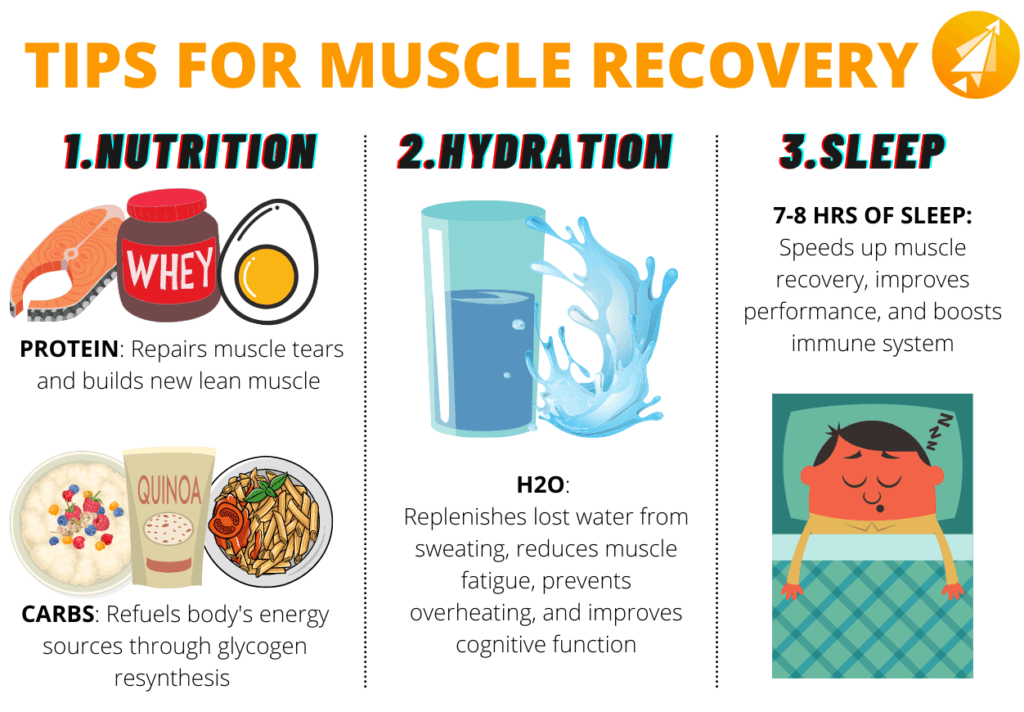
The Science of Recovery: What Happens After a Workout?
After an intense workout, your body isn’t immediately stronger—it’s actually weaker. Your muscles experience microscopic tears, your energy stores are depleted, and your nervous system is fatigued. This is where recovery comes in.
Muscle Breakdown & Repair
When you train, especially with resistance exercises, your muscle fibers sustain tiny tears. Your body responds by repairing and reinforcing these fibers, making them thicker and stronger—a process known as muscle hypertrophy. But without proper recovery, this rebuilding process slows down, and instead of gaining strength, you risk overtraining and stagnation.
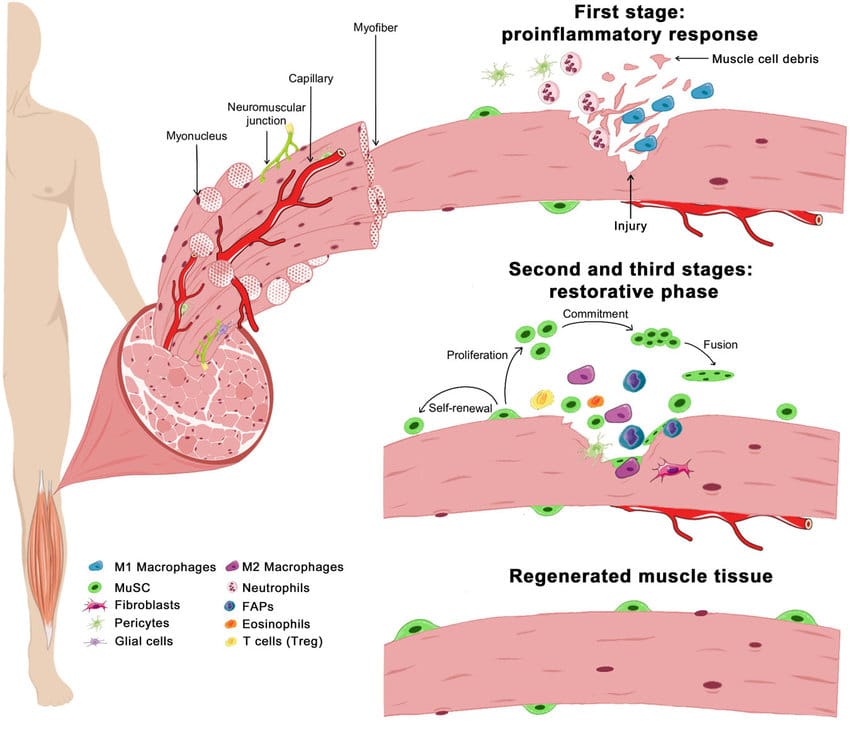
Protein Synthesis & Nutrient Uptake
After exercise, your body prioritizes muscle protein synthesis (MPS)—the process of repairing and building new muscle tissue. For this to happen efficiently, your muscles need amino acids from protein, carbohydrates for energy replenishment, and adequate hydration. Without these, recovery is incomplete, leading to fatigue and slower gains.
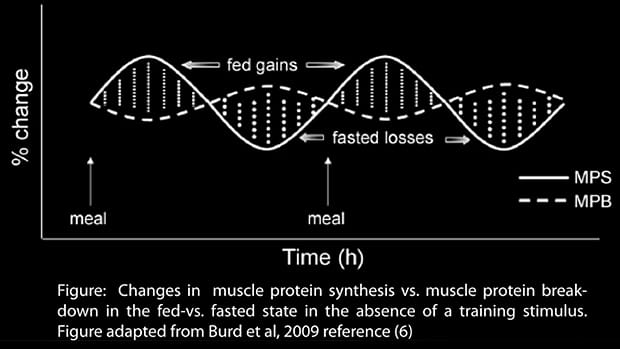
Hormone Balance & Nervous System Recovery
Training places stress on your endocrine (hormonal) and nervous systems. Intense workouts spike cortisol (stress hormone) while depleting testosterone and growth hormone, both of which are essential for muscle growth. Proper sleep, nutrition, and rest help restore these hormones, ensuring your body is primed for the next session.
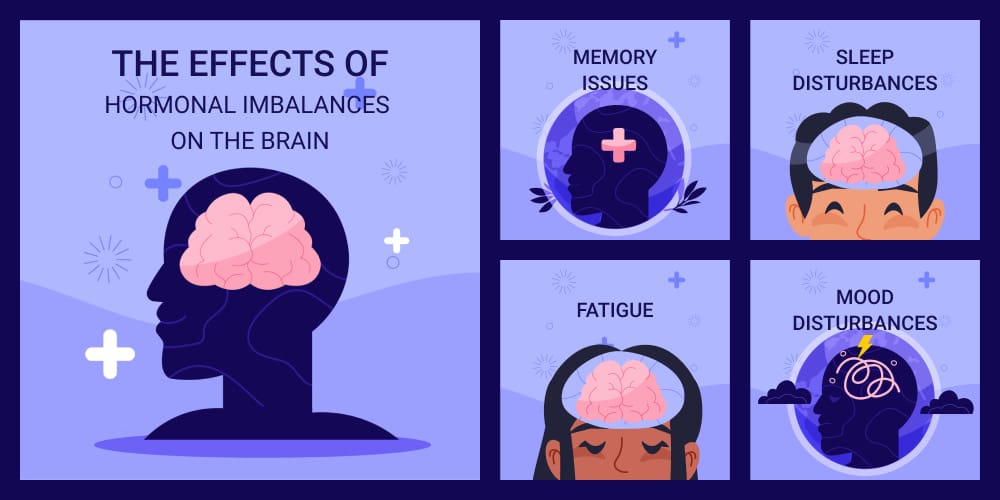
The Role of Inflammation & Blood Flow
Muscle soreness—especially Delayed Onset Muscle Soreness (DOMS)—is caused by inflammation from microtears in muscle tissue. While some inflammation is necessary for growth, chronic inflammation from inadequate recovery slows progress and increases injury risk. Active recovery methods like light movement, stretching, and massage help flush out metabolic waste and deliver fresh oxygen and nutrients to muscles for faster healing.

Why Recovery Dictates Performance
The difference between an elite athlete and an overtrained, plateaued lifter often comes down to recovery efficiency. When you allow your body to repair and adapt properly, you:
✅ Build strength and size faster
✅ Reduce injury risk
✅ Improve endurance and performance
✅ Feel more energized for every session
Neglect recovery, and you’ll face the opposite—fatigue, stalled progress, and even muscle loss. The next sections will cover the most effective recovery methods, so you can maximize every rep, every set, and every rest day.
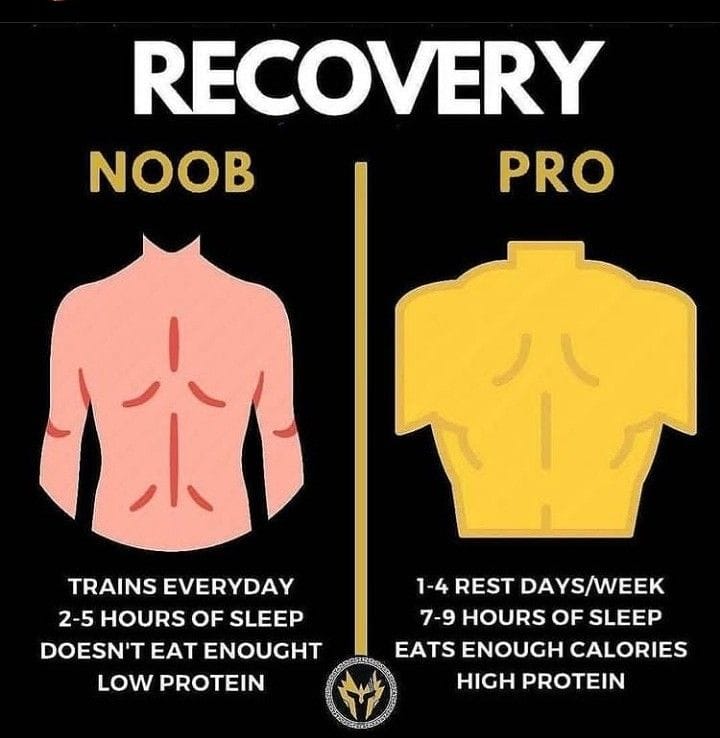
Essential Recovery Techniques
Rest and Sleep
Quality sleep is the most potent recovery tool available, and rest days give muscles time to repair
Nutrition
Nutrition fuels recovery, providing the building blocks needed for muscle repair and growth.
Active Recovery
Active recovery includes light activity on rest days to promote circulation and reduce stiffness
Stretching and Mobility
Stretching post-workout and including mobility exercises in your routine can aid flexibility, reduce tightness, and prevent stiffness
Foam Rolling and Massage
Foam rolling and massage help release muscle tension and reduce soreness.
The 5 Key Pillars of Muscle Recovery for Faster Growth
Recovery isn’t just about resting—it’s about actively helping your body repair, rebuild, and come back stronger. There are five key pillars of muscle recovery that determine how well and how fast you recover. Master these, and you’ll maximize muscle growth, reduce soreness, and improve workout performance.
1. Sleep and Muscle Recovery: How to Maximize Growth Overnight
Why It Matters:
Sleep is when muscle repair and growth happen. During deep sleep, your body releases growth hormone, which is essential for muscle recovery, protein synthesis, and overall repair. Poor sleep leads to slower gains, more fatigue, and increased injury risk.
How to Improve Sleep for Faster Recovery:
✅ Get 7-9 hours of deep, uninterrupted sleep every night
✅ Follow a consistent sleep schedule – going to bed at the same time improves hormone regulation
✅ Optimize sleep environment – blackout curtains, a cool room (60-67°F), and no blue light before bed
✅ Use natural sleep aids if needed – magnesium, melatonin, or herbal teas

2. Post-Workout Nutrition: Best Foods for Muscle Recovery
Why It Matters:
Your muscles need proper nutrition after a workout to rebuild stronger. The right balance of protein, carbs, and healthy fats speeds up muscle recovery, reduces soreness, and restores energy.
Best Recovery Foods for Muscle Growth:
🍗 Protein – Builds and repairs muscle fibers (chicken, fish, eggs, Greek yogurt)
🥔 Carbs – Replenishes glycogen stores (sweet potatoes, rice, oats, fruit)
🥑 Healthy Fats – Reduces inflammation and supports hormones (avocados, nuts, olive oil)
💧 Hydration & Electrolytes – Prevents muscle cramps and fatigue (water, sodium, potassium, magnesium)
3. Active Recovery vs. Rest Days: What’s Best for Sore Muscles?
Active Recovery:
- Light movement (walking, stretching, yoga) helps reduce soreness and increase blood flow
- Best for speeding up muscle recovery while staying active
Complete Rest Days:
- Essential when experiencing excessive fatigue, joint pain, or overtraining
- Allows the nervous system to fully reset
How to Recover Faster:
✅ Use active recovery (light cardio, stretching, mobility work) for mild soreness
✅ Take a full rest day when experiencing extreme fatigue or muscle strain
4. Stretching, Mobility, and Massage for Faster Recovery
Why It Matters:
Tight, stiff muscles limit range of motion, reduce performance, and increase the risk of injuries. Adding stretching, foam rolling, and massage to your routine can improve flexibility, circulation, and recovery speed.
Best Practices for Faster Muscle Recovery:
✅ Dynamic stretching (before workouts) to warm up muscles and prevent injury
✅ Static stretching (after workouts) to improve flexibility and reduce soreness
✅ Foam rolling to break down muscle knots and increase blood flow
✅ Deep tissue massage to accelerate recovery and reduce stiffness
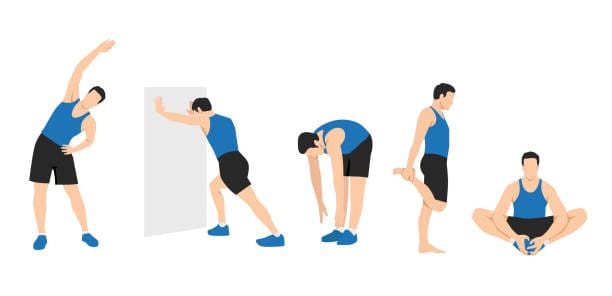
5. Ice Baths, Heat Therapy, and Recovery Hacks That Actually Work
Cold Therapy (Ice Baths, Cryotherapy, Cold Showers):
Tight, stiff muscles limit range of motion, reduce performance, and increase the risk of injuries. Adding stretching, foam rolling, and massage to your routine can improve flexibility, circulation, and recovery speed.
Heat Therapy (Sauna, Heating Pads, Hot Baths):
✅ Dynamic stretching (before workouts) to warm up muscles and prevent injury
✅ Static stretching (after workouts) to improve flexibility and reduce soreness
✅ Foam rolling to break down muscle knots and increase blood flow
✅ Deep tissue massage to accelerate recovery and reduce stiffness

Other Muscle Recovery Hacks:
💡 Compression gear – Enhances blood flow and reduces swelling
💡 Epsom salt baths – Boosts magnesium absorption for muscle relaxation
💡 Contrast therapy – Alternating between hot and cold to flush out metabolic waste
The Biggest Muscle Recovery Mistakes That Slow Down Your Progress
Even if you’re training hard and eating right, poor recovery habits can sabotage your progress. Avoid these common muscle recovery mistakes to prevent unnecessary soreness, fatigue, and stalled muscle growth.
A. Not Getting Enough Sleep: The Silent Progress Killer
Why It Matters:
- Poor sleep leads to lower testosterone and growth hormone levels, slowing down muscle repair and recovery
- Increased cortisol (stress hormone) from lack of sleep breaks down muscle tissue
- Less than 6 hours of sleep per night has been linked to decreased strength, endurance, and coordination
Fix It:
✅ Prioritize 7-9 hours of quality sleep every night
✅ Stick to a sleep schedule to optimize hormone balance
✅ Create a sleep-friendly environment – dark, cool, and free from blue light

B. Skipping Post-Workout Nutrition: Missing the Recovery Window
Why It’s a Problem:
- After a workout, your muscles are primed to absorb nutrients for repair and growth
- Delaying post-workout meals starves muscles of the essential nutrients needed to rebuild
- Low protein intake leads to slower recovery and increased muscle breakdown
Fix It:
✅ Eat a protein-rich meal (20-40g of protein) within 30-60 minutes post-workout
✅ Refuel with complex carbs to replenish glycogen stores
✅ Hydrate properly to prevent muscle cramping and fatigue
C. Overtraining: Why More Isn’t Always Better
Why It’s a Problem:
- Training too often without proper recovery leads to chronic fatigue, stalled progress, and increased injury risk
- Overtraining causes elevated cortisol levels, which break down muscle instead of building it
- Symptoms include constant soreness, poor sleep, irritability, and lack of motivation
Fix It:
✅ Incorporate rest days into your routine (1-2 full days per week)
✅ Listen to your body – excessive soreness or fatigue means you need more recovery
✅ Cycle your training intensity to prevent burnout (hard days vs. lighter recovery sessions)
D. Ignoring Mobility and Stretching: Setting Yourself Up for Injury
Why It’s a Problem:
- Tight, stiff muscles increase your risk of strains, pulls, and imbalances
- Poor flexibility limits your range of motion, reducing strength and performance
- Lack of foam rolling or stretching leads to chronic pain and stiffness
Fix It:
✅ Stretch daily (focus on problem areas)
✅ Use foam rolling to release muscle knots and improve circulation
✅ Incorporate mobility drills before workouts for better movement and injury prevention
E. Not Managing Stress: The Hidden Recovery Blocker
Why It’s a Problem:
- Chronic stress increases cortisol, which slows down recovery and muscle growth
- Mental and physical stress reduces testosterone and growth hormone production
- Poor stress management leads to fatigue, poor sleep, and lack of motivation
Fix It:
✅ Prioritize relaxation (breathing exercises, meditation, or spending time outdoors)
✅ Reduce unnecessary stressors in your daily routine
✅ Ensure proper sleep, nutrition, and hydration to help manage stress naturally
F. Relying Too Much on Supplements Instead of Whole Foods
Why It’s a Problem:
- Supplements can help, but real food provides more complete and bioavailable nutrients
- Many recovery supplements are overhyped and don’t replace a solid diet
- Relying only on powders and pills can lead to nutrient deficiencies
Fix It:
✅ Prioritize whole foods over supplements for muscle recovery
✅ Use protein powders, creatine, and BCAAs as tools, not replacements
✅ Focus on balanced meals with protein, carbs, and healthy fats for optimal recovery
Final Thoughts: Fix These Mistakes for Faster Recovery & Better Gains
If you’ve been making these muscle recovery mistakes, now is the time to correct them. By improving sleep, nutrition, rest, mobility, and stress management, you’ll recover faster, reduce soreness, and build muscle more efficiently.
Recovery Aids and Supplements
Protein Powders
Quick-digesting protein sources like whey are ideal post-workout to kick-start the repair process.
Creatine
Creatine aids muscle recovery by replenishing ATP (energy), supporting short bursts of strength and power in workouts
Branched-Chain Amino Acids (BCAAs)
BCAAs, especially leucine, support muscle repair and reduce muscle soreness.
Magnesium
Magnesium helps with muscle relaxation, reducing cramps and tension, and supports deep, restful sleep.
Muscle Recovery Myths Debunked: 10 Lies That Hurt Your Gains




















Recovery is an often-overlooked part of fitness, but it’s the key to unlocking muscle growth, endurance, and injury prevention. By incorporating these recovery strategies, you’ll give your muscles the time they need to rebuild stronger and perform better in every session. Remember: muscles aren’t built in the gym—they’re built during recovery.
Trending Articles:
Do you have any questions?





